South Asia positioned to remain the fastest-growing region amid a prolonged episode of slow global growth:
UN report Growth to benefit from robust domestic demand and a supportive macroeconomic environment.

New Delhi, 18 January – South Asia is exhibiting the fastest growth among all regions, even as the global economy continues to be trapped in a prolonged period of slow economic growth, according to the United Nations World Economic Situation and Prospects (WESP) 2017 Report released today. The report shows that world gross product grew by just 2.2 per cent in 2016, marking its slowest pace of expansion since the Great Recession of 2009.
Global growth is projected to see a moderate improvement to 2.7 per cent in 2017 and 2.9 per cent in 2018, but this is more an indication of economic stabilization than a signal of a robust revival of global demand.
Against this backdrop, South Asia will continue to grow more rapidly than other regions. Regional GDP is estimated to have expanded by 6.7 per cent in 2016.
Supported by robust consumption, a moderate pickup in investment and a supportive macroeconomic environment, growth is projected to accelerate to 6.9 per cent in 2017 and 2018.
While monetary policy stances are generally accommodative across the region, fiscal policy remains moderately tight but with some degree of flexibility.
Growth prospects for the larger economies India has positioned itself as one of the most dynamic emerging economies.
Growth is projected to reach 7.7 per cent in 2017 and 7.6 per cent in 2018 amid strong private consumption.
Investment demand is expected to pick up slightly, supported by monetary easing, government efforts towards infrastructure investments and public-private partnerships, and domestic reforms.
The outlook for the Islamic Republic of Iran has strengthened considerably.
This can be attributed to the expansion of oil exports, increasing business confidence and a surge in foreign investments.
GDP growth is estimated to have accelerated to 4.3 per cent in 2016, with a further pickup expected in 2017 and 2018.
In Pakistan, growth is projected to remain robust, above 5.0 per cent.
Economic activity will be driven by strong consumption, a supportive monetary policy stance and rising investment. Similarly, the Bangladesh economy continues to expand at a vigorous pace, driven by strong domestic demand and a more proactive fiscal stance. Growth is projected to remain robust at 6.8 and 6.6 per cent in 2017 and 2018, respectively. Downside risks and policy challenges The report cautions that there are significant downside risks to the global and the regional outlook. Among other issues, the report highlights the high degree of uncertainty in the international policy environment and elevated foreign currency-denominated debt levels as key downside risks that may derail global growth.
Brexit and Donald Trump’s election as the U.S. president added to uncertainty as Trump has railed against existing free-trade agreements and threatened to impose punitive tariffs on some imports.
The co-authors of the report however say South Asia is the world’s fastest-growing region, with 6.7 percent growth in 2016 projected to reach 6.9 percent in 2017 and 2018. It says despite a slowdown in China, Asia remains a “bright spot.
The report said Most economies in East Asia and South Asia, led by China and India, saw robust growth driven by strong expansion of domestic demand.
Issued by the UN Department of Public Information For South Asia, potential renewed episodes of high financial volatility, including a sudden surge in external borrowing costs and large capital outflows, could significantly increase the difficulties to roll over debt. The ongoing economic reform agenda might also experience some setbacks, while political instabilities could dampen investment prospects.
From a medium-term perspective, a key fiscal challenge for the region involves improving tax revenues and promoting a supportive environment for the private sector, which together can enhance the capacity to implement counter-cyclical policies.
Given the close linkages between demand, investment, trade and productivity, the extended episode of weak global growth may prove self-perpetuating, especially in the absence of concerted policy efforts to revive investment and foster a recovery in productivity.
Under those circumstances, the report calls for a more balanced policy approach – one that goes beyond over-reliance on monetary policy- to not only restore robust growth in the medium term, but also to achieve greater progress on sustainable development. About the report:
The World Economic Situation and Prospects report is the UN’s flagship publication on expected trends in the global economy.
WESP is produced annually by the UN Department of Economic and Social Affairs (DESA), the UN Conference on Trade and Development (UNCTAD), the five UN regional commissions and the World Tourism Organisation (UNWTO).
SCC, NIUA and Western Digital come together for securing cities in India

SCC, NIUA and Western Digital come together for securing cities in India
- Surveillance to act as a catalyst for secure cities in India
- Role of IT especially surveillance is vital for safer and smarter cities
New Delhi, 18 January, 2017: Smart Cities Council (SCC) along with National Institute of Urban Affairs (NIUA) today organized a round table in New Delhi to discuss the role of surveillance for a safe and secure India.
The event also witnessed the launch of the report on “Role of Surveillance in Securing Cities” in the presence of senior government representatives,Mr. G. K. Pillai Chairman, Data Security Council of India & Former Home Secretary and Prof Santosh Kumar, Executive Director, National Institute of Disaster Management, Ministry of Home Affairs. The report has been supported by Western Digital, an industry-leading developer and manufacturer of data storage solutions.
|
Focus Areas:
Ø Surveillance to act as a catalyst for secure cities in India
Ø Role of data and IT, especially surveillance is vital for safer and smarter cities
Ø Urgent need for better storage capacities
|
The report aims to highlight the need for surveillance and the role it plays in making our cities secure and smarter. It also provides an analysis on opportunities, challenges and the current scenario for video surveillance in India. The study is a platform to analyse and implement the recommendations for creating safer and securer environment.
India today is on its way to develop its first 100 smart cities. With Hon’ble Prime Minister Narendra Modi’s vision of ‘Smart Cities’, the role of data and IT, especially video surveillance in enhancing security will become vital. Under the flagship “Safe City” project, the Union Ministry proposes US$333 million to make seven big cities (Delhi, Mumbai, Kolkata, Chennai, Ahmedabad, Bangalore and Hyderabad) focus on technological advancement.
Speaking at the launch, Khwaja Saifuddin, Senior Sales Director – South Asia, Middle East and Africa, Western Digital, said, “With growth of public infrastructure on a constant rise, accompanied with increasing IT and security spending, the surveillance sector is expected to witness a robust growth in India. All these factors pertaining to video surveillance create a lot of data, which needs to be stored for future analysis and monitoring. Therefore, it is imperative to set the video surveillance standards in place to ensure high quality and sustainability.”
The round table delivered an interesting outcome focusing on the real-time, dynamic and world class video surveillance system forming an important key to achieve the vision for secure cities. Video surveillance adaptation rate and increasing demand for high-tech technologies also emerged as an important driver of the outstanding growth of the surveillance market.
The event also delivered a consensus on the government focusing on context specific needs and investing in the latest video surveillance technology with highest-resolution cameras, best quality analytical tools and highest capacity storage
Mr. Jagan Shah, Director, NIUA stated that, “Video surveillance has emerged as a key component of the safety and security apparatus used by various organisations, both public and private. All state governments need to ensure the security of citizens through a vigilant attitude and zero tolerance toward violators of public safety. Use of ICT and advanced instrumentation is necessary for effective response, along with the appropriate urban planning that reduces dark spots in the city and promotes greater round-the-clock activity on city streets. The powers of planning and technology need to be used in an integrated manner to achieve safe, secure and liveable cities.”
According to Mr. Pratap Padode, Executive Director & Founder, Smart Cities Council India “There is a positive correlation between urbanisation and crime. Therefore with affirmative evidence that surveillance does control crime and given the Smart Cities Mission drive, city administrations need to focus on installing and upgrading defined specification of cameras, storage systems and allied technologies. Our research and survey findings have highlighted that the current storage capacity is poor; while the overall surveillance system was rated higher on effectiveness and adaptability. There is need for cameras that can assist in ‘Crime detection’ and ‘Community watch’; while crime prevention, traffic management and women safety are other objectives that are deemed important.”
One of the key survey findings was that ‘large storage capacity’ came up as the number one priority. As hard drive technology continues to advance, it is important to utilise open standards to ensure that storage is scalable and future proof to enable longer retention cycles and broader analytical capabilities.
In addition, advances in IP-surveillance – such as intelligent video algorithms – will make it even more critical to select open storage devices that can handle combinations of data from different sources.
Today in India, video surveillance is not just restricted to Tier-I cities, but many Tier-II and Tier-III cities. An interesting observation which the report highlights is the sharp reduction in violence or crime in the cities owing to video surveillance systems which indicated that it is indeed proving effective in the public domain in India.
In times to come, multiple stakeholders will need to work in tandem with each other and derive impactful measures to achieve a safer and more secure smart cities for the citizens. A dependable collaboration between the public and private users as well as vendors/ installers and policy makers is also of utmost importance. These are the priorities that at the end will help us achieve securer cities through smart surveillance.
Gulfam and Harish K are joint second round leaders at Final Qualifying Stage
Eighty-two players make the halfway cut, hole-in-one for Nur Hossain Sardar
Kensville Golf & Country Club, Ahmedabad, January 18, 2017: Delhi’s Gulfam (75-68) and Mysuru’s Harish K (70-73) led the field after round two of the PGTI’s Final Qualifying Stage for the 2017 season being held at the Kensville Golf & Country Club near Ahmedabad. The two golfers were tied for the lead at one-under-143.
Gulfam shot the day’s best score of four-under-68 which featured five birdies and a bogey. Harish K on the other hand carded a one-over-73 that included three birdies and four bogeys.
Amateur Arjun Prasad who recently earned his Asian Tour card was in tied third at even-par-144 along with Vijay Kumar, C G Somiah and P Prabhu.
Kolkata’s Nur Hossain Sardar fired a hole-in-one on the 11th during his round of 71. He was placed tied 12th at two-over-146.
The halfway cut fell at 12-over-156. The top eighty-two players made the cut.
At the end of round four on Friday, the top 39 players (+ ties) will earn full cards for the 2017 PGTI season.
In solidarity with the survivors of sexual assault in Bangaluru
Press Conference
In solidarity with the survivors of sexual assault in Bangaluru, gatherings are going to take place on January 21st across cities in India.
To further this aim, various citizen groups in Dwarka are coming together to take action. This action will manifest in the form of a three hour long gathering in the heart of the sub city, on January 21, 2017, from 9pm to 12 midnight. Here, we not only aim to occupy a prominent public space as our right but also use songs, poetry and tools of performing arts to highlight the issue.
We invite you to a press conference on January 19, 2017 at 3pm at IWPC, Windsor Place, New Delhi.
AK Parashar, Sudha Sinha, Ritu Kolbe, Shameera Ashroff, Leena Dabiru and Shabnam Hashmi (all residents of Dwarka) will be present at the press conference.
Gambian Prez refuses to step down despite efforts

Gambian President Yahya Jammeh is refusing to step down despite efforts to persuade him to leave office ahead of a deadline set by Senegal.
Adama Barrow is due to be inaugurated as the new President today, and West African military forces are poised to move in. Mauritanian President Mohamed Ould Abdel Aziz met Mr Jammeh for last-minute talks before flying on to meet Senegal’s President Macky Sall.
Mr Barrow won elections last month. Senegalese troops remain stationed at the Gambian border, as the deadline for Mr Jammeh to stand down passed at midnight.
The threat of military action is supported by Nigeria and other states in the region. However, Gambian army chief Ousman Badjie said his troops would not fight Senegalese forces should they enter into the country.
IORA has significant role to create opportunities
Indian Ocean Rim Association IORA to work out MoU Cooperation in MSME Sector amongst member nations at The Ashoka Hotel, Chankyapuri, New Delhi
IORA has significant role to create opportunities and grow employment innovation seek to promote cooperation info sharing development in IORA member.Micro, participants words debated empowerment of 20 % of 9 billion with nutritional food an important project.
Instead of MoU, the pragmatic action are needed for the SME among member countries of IORA.
Thus work out for cooperation in MSME Sector among IORA Nations are on 19-20 Jan. Agenda Globalization, were discussed with Chair of IORA , DG Ediith Vries and Indian Joint Secretary of MSME Ministry Mr Manoj Joshi..
Shri @KalrajMishra addressing at inauguration of workshop to negotiate an MoU for MSME Cooperation amongst IORA member states, in New Delhi
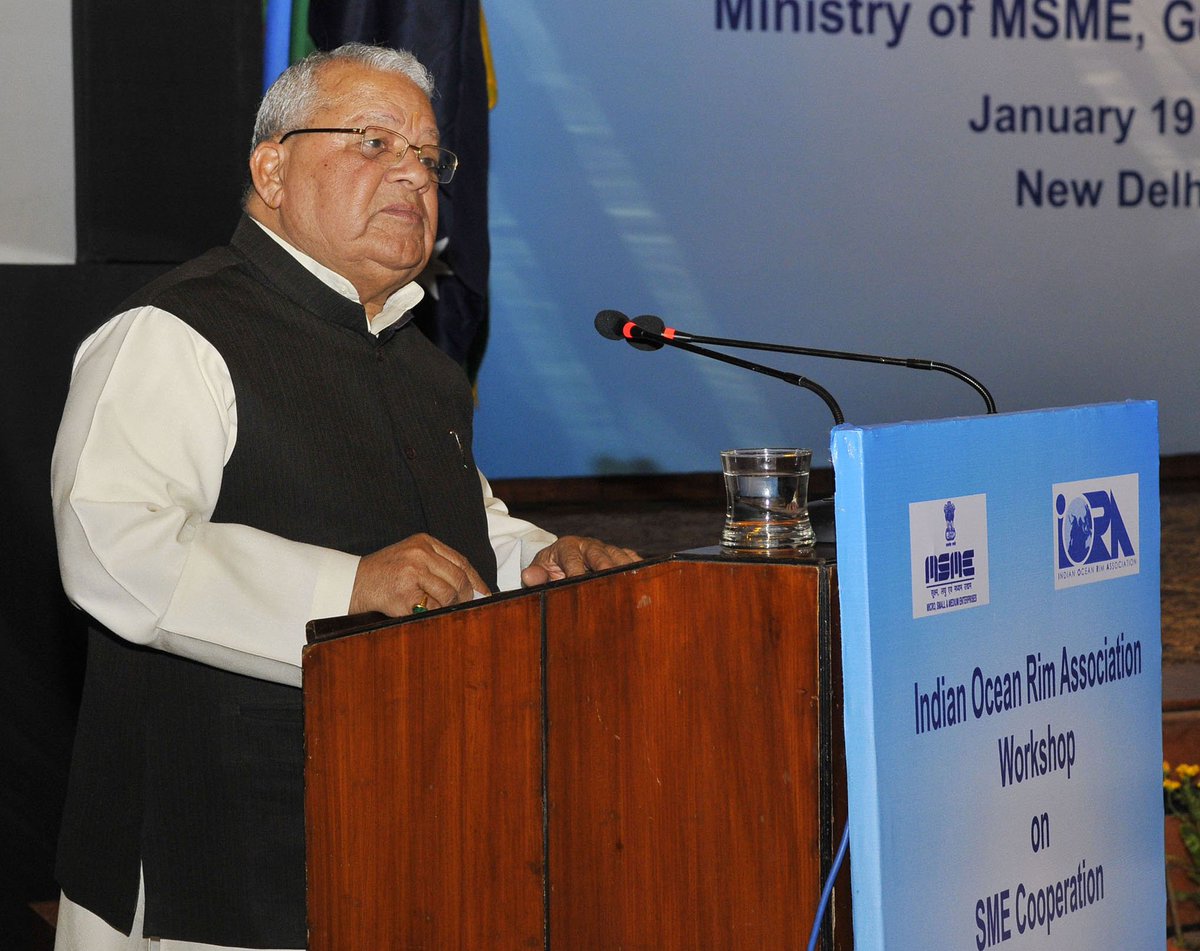

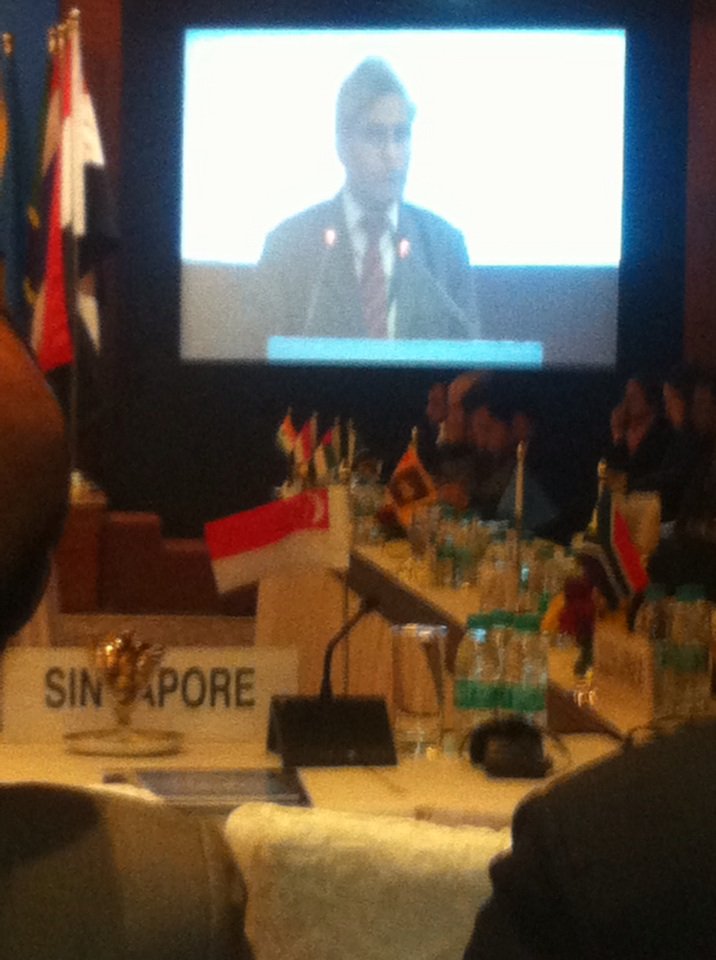
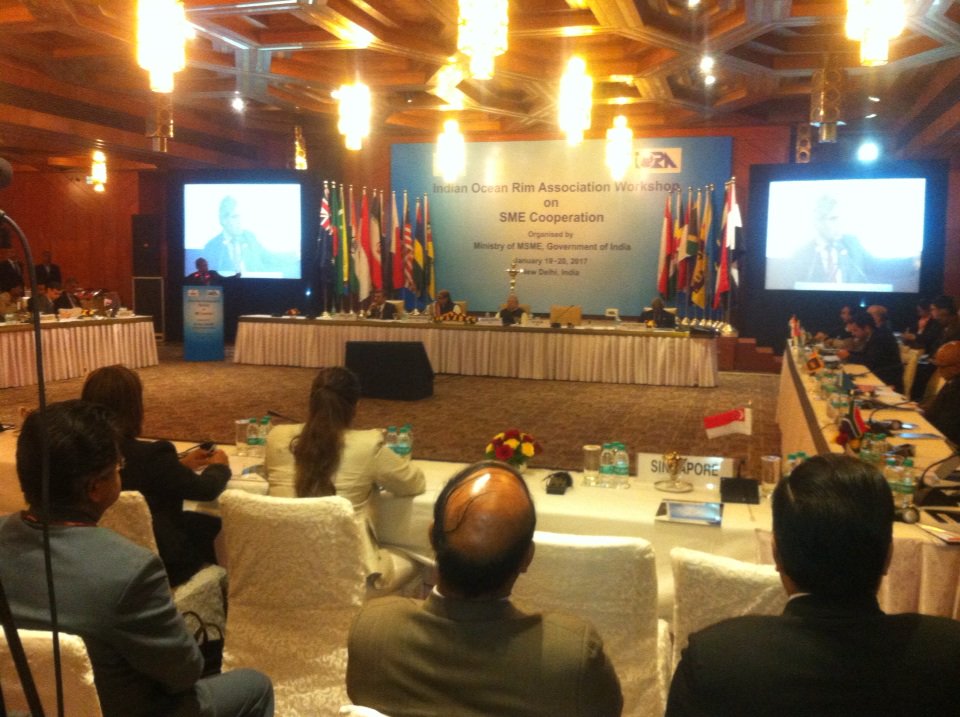
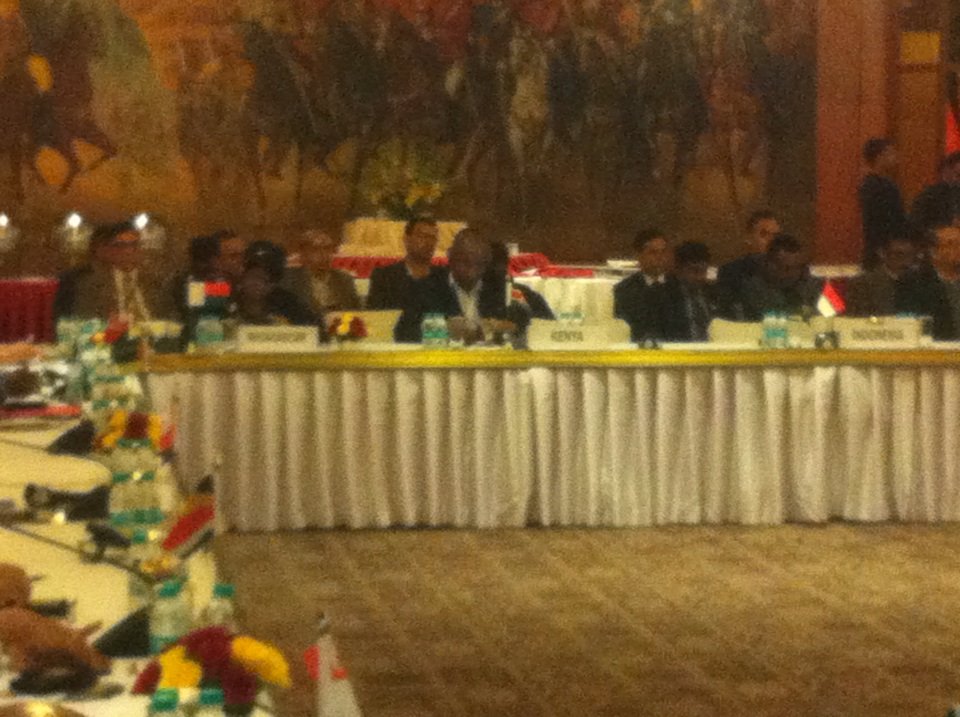
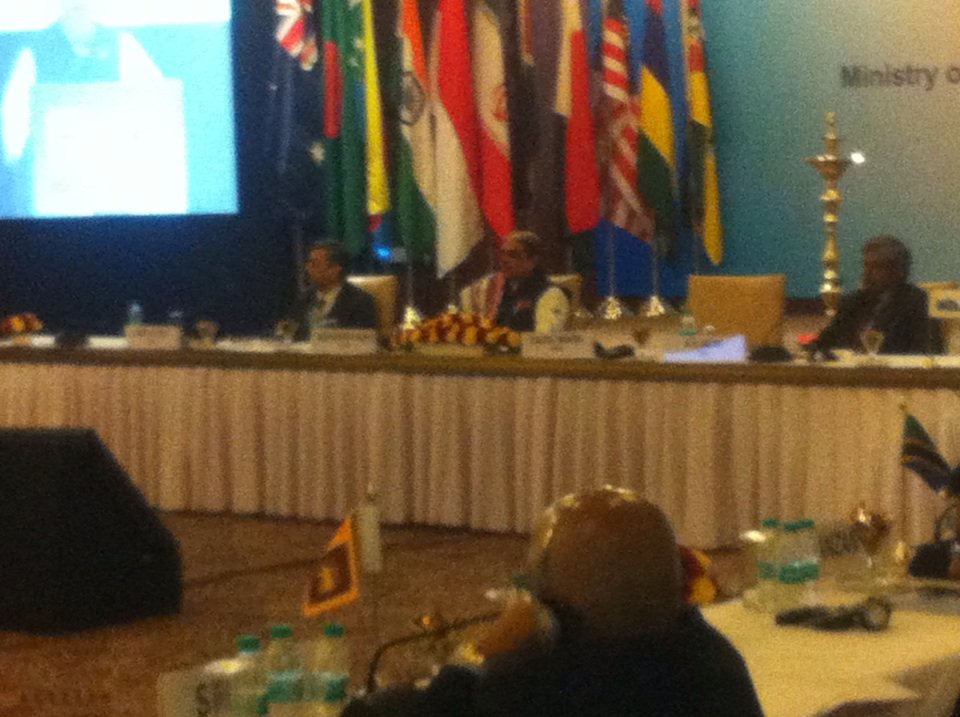

 January 2017.
January 2017.



Comments
Post a Comment